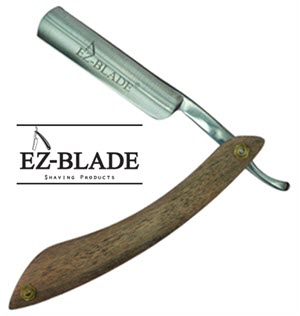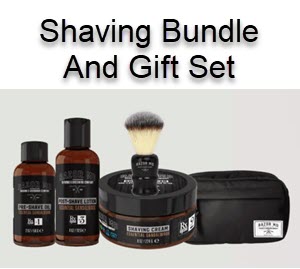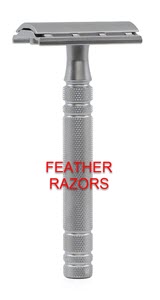How to Prevent Itch After Shaving: Your How-To
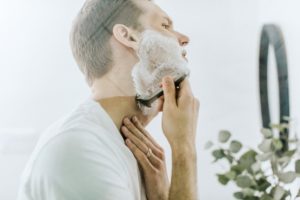 How to Prevent Itch After Shaving & Ditch the Itch
How to Prevent Itch After Shaving & Ditch the Itch
The Universal Problem of Post-Shave Skin Irritation and Itchiness
If you’ve ever winced at the sting of aftershave or sighed in frustration at the red, itchy bumps appearing after your daily shave, you’re not alone. Skin irritation and itchiness post-shave are as predictable as the sunrise for many men and women. Whether you’re meticulously sculpting your beard or ensuring smooth legs for the beach, the annoyance is universal. We all long for that clean, soft, post-shave feel but often end up with the unpleasant itchiness that can turn a routine grooming task into a skin nightmare.
The Importance of Knowing How to Prevent Itch After Shaving
It’s easy to surrender and accept this discomfort as the inevitable aftermath of shaving, but it doesn’t have to be this way. Not only is the post-shave itch inconvenient and uncomfortable, but consistent skin irritation can also lead to more severe skin issues over time. That’s why knowing how to prevent itch after shaving is crucial. It’s not merely a matter of comfort; it’s a step towards healthier skin care. It is designed to help you understand why your skin reacts the way it does and how you can change your shaving routine to banish the burn once and for all.
Understanding the Itch: The Science Behind Post-Shave Irritation
The Physiological Reasons Why Skin Becomes Irritated After Shaving
Shaving is more than just a cosmetic ritual; it is an activity that directly interacts with your skin’s biology. When you shave, you remove hair and the top layer of skin cells, known as the stratum corneum. This physical disruption can irritate the skin, triggering inflammation as your immune system responds to the perceived injury.
Hair, particularly facial hair in men and body hair in women is more than just a strand of keratin protein. Hair is attached to a sebaceous gland that produces oil to keep skin hydrated and is surrounded by nerve endings. When you shave, you’re tugging at the hair before cutting it, which can irritate these nerve endings and cause redness, inflammation, and that dreaded itch.
Post-shave itchiness can also be exacerbated by dryness. If not correctly formulated, shaving creams and gels can strip the skin of natural oils. It leads to dry, tight skin prone to itchiness and flaking. Shaving can increase the chances of an itchy aftermath if you’re prone to dry skin.
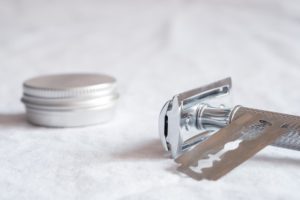 Factors Contributing to Skin Irritation: Razor Type, Shaving Technique, Skin Sensitivity
Factors Contributing to Skin Irritation: Razor Type, Shaving Technique, Skin Sensitivity
- Razor Type: Not all razors are created equal. A dull blade can tug at the hair instead of cleanly cutting it, leading to more irritation. Similarly, multi-blade razors can cause ‘razor burn’ by cutting the hair below skin level, causing ingrown hairs when the sharp edge curls back into the skin.
- Having Technique: Aggressive shaving or shaving against the grain can cause more trauma to the skin and hair, resulting in a greater chance of inflammation and itchiness. Applying too much pressure, not using enough lubrication, or not adequately preparing the skin can also contribute to post-shave irritation.
- Skin Sensitivity: If you have sensitive skin, you’re more likely to experience irritation from shaving. Conditions such as eczema or dermatitis can be exacerbated by shaving. Some shaving products’ fragrances, preservatives, and other ingredients can further irritate sensitive skin.
The good news is that by understanding these factors, you can adjust your shaving routine and choice of products to reduce or even eliminate post-shave itchiness. The following sections will guide you on how to do just that.
Common Shaving Mistakes Leading to Itchiness
Highlighting Frequent Shaving Errors Causing Itchiness
The path to an itch-free shave is often riddled with errors. Understanding and avoiding these missteps can make all the difference.
- Shaving Dry: This is a cardinal sin in the world of shaving. Dry shaving, without any water or shaving cream, can cause the razor to drag across the skin, leading to unnecessary friction, irritation, and, ultimately, itchiness.
- Not Prepping the Skin: Warm water softens the hair, making cutting and opening up your skin’s pores easier. This results in a closer, smoother shave, reducing the chances of itchiness.
- Using a Dull Blade: Dull blades tug on the hair instead of cutting it cleanly, leading to inflammation and, you guessed it, itchiness. They can also harbor bacteria, which can cause skin infections.
- Applying Too Much Pressure: Let the razor do the work when shaving. Excess pressure leads to skin trauma, which can result in razor burn and itching.
- Skipping Aftercare: After shaving, your skin needs soothing and protection. Skipping this step leaves your skin vulnerable to dryness and inflammation, which can cause itchiness.
- Shaving Against the Grain: While it might give you a close shave, shaving against the direction of hair growth increases the risk of razor burn, bumps, and itching. It can also lead to ingrown hairs, which can become inflamed and itchy.
Debunking Shaving Myths That Exacerbate Skin Irritation
Along with typical mistakes, there are also several misconceptions about shaving that can lead to skin irritation.
- Myth: The More Blades, the Better: While multi-blade razors can offer a close shave, they can also irritate. It is because, with each pass, they cut the hair and remove a layer of skin, which can lead to over-exfoliation and irritation.
- Myth: Shaving Makes Hair Grow Back Thicker: Shaving cuts hair at its thickest point, making it seem like it’s growing back thicker and coarser. Shaving does not affect the rate or thickness of hair growth.
- Myth: It’s Okay to Share Razors? Sharing razors can spread bacteria, leading to skin infections and inflammation. Always use your razor, and clean it after each use.
Recognizing and avoiding these common errors and misconceptions can significantly reduce post-shave itchiness and enjoy a smoother, more comfortable shaving experience. The following section will guide you on the correct shaving technique to prevent itchiness and irritation.
The Perfect Shave: Preventing Itch Step-by-Step
Detailed Guide on Proper Shaving Technique to Avoid Itchiness
- Preparation: Start by washing your face or body part you plan to shave with warm water and a gentle cleanser. This process will cleanse your skin, open your pores, and soften the hair follicles, making them easier to shave.
- Apply a Shaving Cream or Gel: Use a good quality shaving cream or gel and let it sit on your skin for a few minutes. This step further softens the hair and creates a barrier between the blade and your skin, reducing the risk of nicks and irritation.
- Use a Sharp, Clean Razor: Always use a sharp, clean razor. Dull blades can cause tugging and pulling, leading to irritation and itchiness.
- Shave with the Grain: Shave in the direction your hair grows (with the grain), not against it. It can significantly reduce the risk of razor burns, ingrown hairs, and itchiness.
- Don’t Rush: Take your time while shaving. Rushing can lead to mistakes, nicks, and irritation.
- Rinse Thoroughly: Once you’re done shaving, rinse your skin thoroughly to remove any remaining shaving cream or gel.
- Apply a Moisturizer or Aftershave Balm: Finally, apply a moisturizer or aftershave balm to soothe your skin and prevent dryness.
Unpacking the Significance of Each Step in Preventing Irritation
Each step of this shaving routine plays a crucial role in preventing post-shave itchiness:
- Preparation: By preparing your skin with warm water and a gentle cleanser, you reduce the chances of dirt and oil irritation. Warm water opens the pores and softens hair, making shaving easier.
- Applying Shaving Cream or Gel: Shaving products lubricate the skin, allowing the razor to glide without tugging. They also hydrate the hair, making it softer and easier to cut.
- Using a Sharp, Clean Razor: Sharp razors cut hair cleanly, reducing the chances of tugging and pulling that can irritate the skin.
- Shaving with the Grain: Shaving in the direction of hair growth reduces the risk of ingrown hairs, which can become inflamed and itchy.
- Not Rushing: Taking time ensures you don’t miss spots or repeatedly shave over the same area, which can irritate you.
- Rinsing Thoroughly: Rinsing ensures no product is left on your skin to irritate.
- Applying a Moisturizer or Aftershave Balm: Moisturizing helps to restore any moisture lost during shaving and soothes the skin, reducing the chances of post-shave itchiness.
The following section discusses the best products to help prevent itch after shaving.
Top-rated Products to Prevent Itch After Shaving
Recommended Products for a Smooth, Itch-Free Shave: Creams, Razors, Balms
- Creams: Look for shaving creams that are formulated for sensitive skin. They typically contain soothing ingredients like aloe vera, chamomile, and oatmeal. An excellent example is the ‘Cremo Shave Cream,’ known for its super-slick formula that minimizes nicks and razor burn.
- Razors: A razor with a flexible head that can contour to your skin reduces the risk of nicks and cuts. One such product is the ‘Gillette SkinGuard Razor,’ specifically designed for sensitive skin and proven to reduce irritation.
- Balms: An aftershave balm like the ‘Nivea Men Sensitive Post Shave Balm‘ can soothe and hydrate your skin post-shave, reducing itchiness. It’s alcohol-free, meaning it won’t dry out your skin and exacerbate itching.
Individual Product Reviews Discussing Pros, Cons, and Usage
- Cremo Original Shave Cream: This cream is highly rated for its smooth formula, which reduces razor burn and irritation. It’s affordable, and a little goes a long way, meaning one tube will last you quite a while. On the downside, it doesn’t produce a thick lather like traditional shaving creams, which some users might not prefer.
- Gillette SkinGuard Razor: This razor is designed to minimize tugging and pulling, which can lead to irritation and itchiness. It has a unique SkinGuard bar positioned between the blades to reduce blade contact with the skin. However, the razor could be more pricey than others on the market. There are better options for those seeking the closest shave.
- Nivea Men Sensitive Post-Shave Balm: This aftershave balm soothes and hydrates skin post-shave, reducing itchiness. It’s alcohol-free, which is excellent for preventing dryness. However, it has a distinct scent, which may appeal to only some.
In the following section, we’ll get into some natural remedies for your skin after shaving. These can be especially useful if sensitive skin reacts to common skincare ingredients.
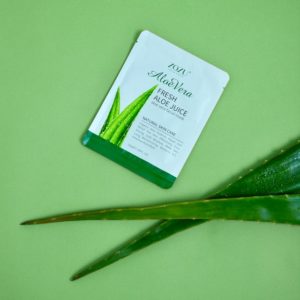 Natural Remedies for Post-Shave Itch Relief
Natural Remedies for Post-Shave Itch Relief
Home-Based and DIY Solutions for Calming Irritated Skin Post-Shave
- Aloe Vera is known for its soothing and healing properties; it can help calm your skin after shaving. Just apply a thin natural aloe vera gel layer to the shaved area and let it air dry.
- Cold Compress: A cold compress can quickly soothe irritated skin and reduce inflammation. After shaving, wrap a few ice cubes in a soft cloth and apply it to your skin for a few minutes.
- Oatmeal: Has anti-inflammatory and antioxidant properties to help soothe skin. You can make an oatmeal mask by mixing ground oats with warm water to form a paste, applying it to the shaved area, leaving it on for 10-15 minutes, and then rinsing it off.
- Tea Tree Oil: oil has anti-inflammatory and antimicrobial properties that can help calm irritation and prevent infection. Apply a few drops of coconut or jojoba oil to your skin.
Cautions and Considerations When Using Homemade Remedies
While these home remedies can relieve post-shave itch, it’s important to remember that everyone’s skin is different. What works for one person might not work for another. Always patch-test a new remedy on a small skin area to ensure you don’t have an allergic reaction. If irritation occurs, discontinue use. Additionally, natural only sometimes means safe. Essential oils, like tea tree oil, should always be diluted and never applied directly to the skin.
Finally, while these remedies can help soothe the itch, remember that prevention is vital. A proper shaving technique and high-quality products can significantly reduce post-shave itchiness in the first place.
When to Seek Dermatological Help
Signs Indicating It’s Time to Consult a Skin Specialist for Shaving Irritation
While minor post-shave itch and irritation can often be managed at home, there are times when seeking professional help is necessary. If your skin remains inflamed, itchy, or painful for several days after shaving, it might indicate an underlying skin condition or infection. Other red flags include signs of infection such as pus, increasing redness around the area, or a fever. Additionally, if the irritation is so severe that it affects your quality of life or your ability to shave, you should consult a dermatologist.
What to Expect from a Professional Dermatology Consultation
During a dermatology consultation, the specialist will evaluate your skin condition and ask about your shaving routine, the products you use, and any skin allergies or sensitivities. They might conduct a skin patch test to determine your allergy to specific ingredients. After diagnosing the issue, they’ll provide tailored advice and treatment options, ranging from topical medications to alleviate the itch and inflammation to recommendations for altering your shaving routine or using different products. The goal will be to treat the symptoms and address the root cause of your post-shave irritation.
Summing Up Key Takeaways on Preventing Itch After Shaving
In conclusion, the post-shave itch is a common issue that can be significantly reduced with the proper techniques and products. Prepping the skin, using a good quality shaving cream or gel, and shaving with the grain will make a significant difference. Utilizing recommended products and exploring natural remedies can offer additional comfort. However, seek professional help if irritation persists or worsens after shaving.
Inviting Readers to Share Their Experiences and Shaving Tips
Now, we’d love to hear from you! What works best to keep your skin itch-free after shaving?
Do you have any tried-and-true products or home remedies that you swear by?
Have you ever experienced persistent irritation and found a solution that might help others?
Sharing your input could make all the difference for someone dealing with the same issues. After all, we’re in this together, and by sharing our wisdom, we can help each other achieve a smoother, more comfortable shave.
Frequently Asked Questions
Addressing Common Queries on How to Prevent Itch After Shaving
- Why does my skin itch after I shave?
The itching sensation can be due to several reasons, such as dry skin, improper shaving technique, or using a dull blade. The shaving friction can also disrupt your skin’s protective barrier, leading to irritation and itching.
- How can I immediately soothe my skin post shave?
You can immediately soothe your skin by applying a cold compress, which can help reduce inflammation and itching. An aftershave balm or moisturizer for post-shave care can also provide immediate relief.
- What type of razor should I use to prevent itchiness?
It’s advisable to use a sharp, clean razor for sensitive skin. A dull blade can tug and pull at your skin, irritating it. Also, some people find that razors with fewer blades or safety razors can cause less irritation.
- Are there any specific ingredients I should look for in shaving products to prevent itchiness?
Ingredients like aloe vera, chamomile, oatmeal, and glycerin can soothe and hydrate your skin. In contrast, you should avoid products containing alcohol or fragrances, as they can dry out and irritate your skin.
- How often should I shave to prevent itchiness?
The frequency of shaving can vary depending on your skin type and hair growth. However, it’s essential not to shave too often as it can strip away your skin’s natural oils, leading to dryness and irritation. Listen to your skin and find a balance that suits you.
- Bakblade 2.0: The Ultimate Solution for Back Hair Removal
- Best Ball Shaver for Sensitive Skin – 2024 Picks
- The Shaving Gel Hack That Beauty Gurus Don’t Want You to Know About!
- Henson Shaving: Where Design Meets Durability and Performance
- Caramel Honey Blonde Hair: Elevate Your Look
- Feather Razors: Precision Shaving for Every Skin Type
- Straight Razor Shaving: Unlocking a Closer, Smoother Shave
- Premium Safety Razors: Your Guide to Quality Shave
- Pros & Cons: Shaving Against the Grain Guide
- Maximize Your Shave: Norelco Sensotouch 3d Razor
- Best Aftershave for Men: Elevate Your Grooming
- Where to Buy A Straight Razor: Expert Stores & Online Tips
- Elevate Your Grooming Game with a Premium Shaving Kit
- Unlock Shine: The Ultimate Hydrating Cleansing Conditioner
- Styptic Pencils: Quick Fix for Minor Bleeds & Nicks
- Panasonic Men’s Shaver: Experience The Future
- Pre Shave Oil: Reduce Nicks & Razor Burn
- Van Der Hagen shaving soap review: A Closer Look
- Scuttle Shaving: Unlocking the Secret to a Perfect Shave
- Ogallala Bay Rum: A Timeless Scent for the Modern Gentleman
- Best Double Edge Razors: A Cut Above the Rest
- Master the Art of Shaving: Your Guide to Buying a Straight Razor
- How To Sharpen Electric Razor Blades: Quick Guide
- The Benefits of Aftershave: It’s Skin Care
- Secure & Stylish: Choosing the Best Travel Razor Case
- Master the Art of Shaving with Adjustable Safety Razors
- The Best Safety Razors You Can Find for a Superior Shave
- Cremo Shaving Cream: For the Ultimate Shave
- Simpson Shaving Brush: Your Best Shave Awaits!
- The Secret to a Perfect Shave? Unveiling the Edwin Jagger Safety Razor
